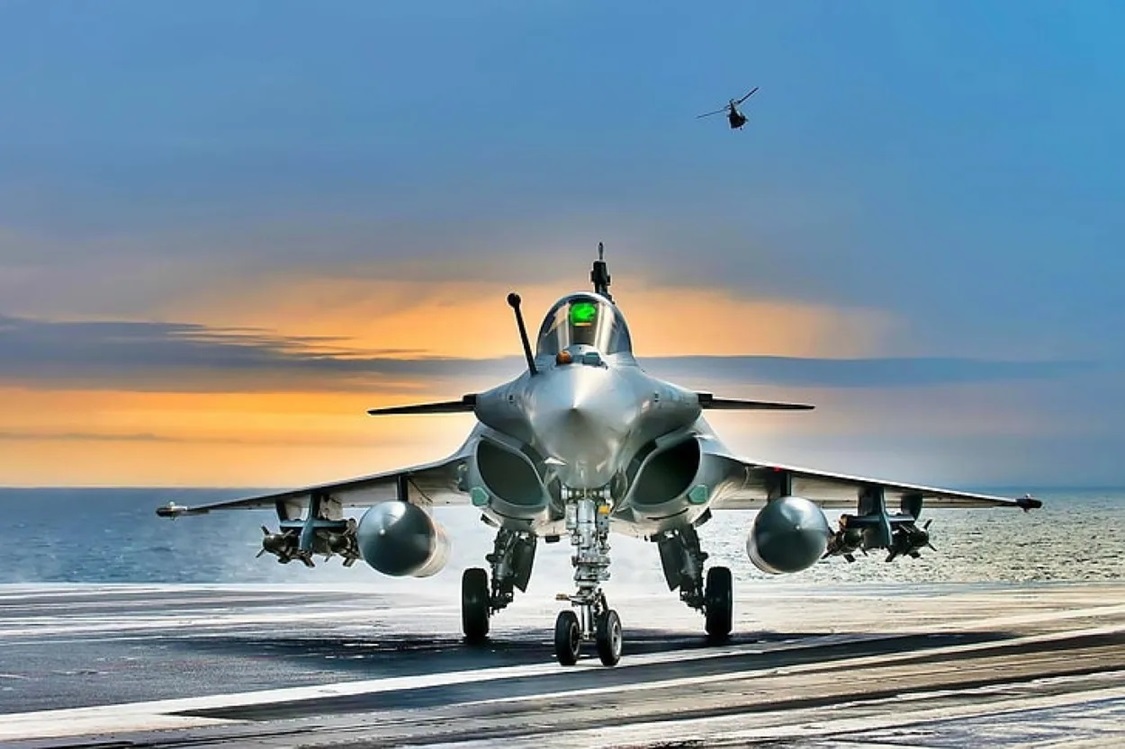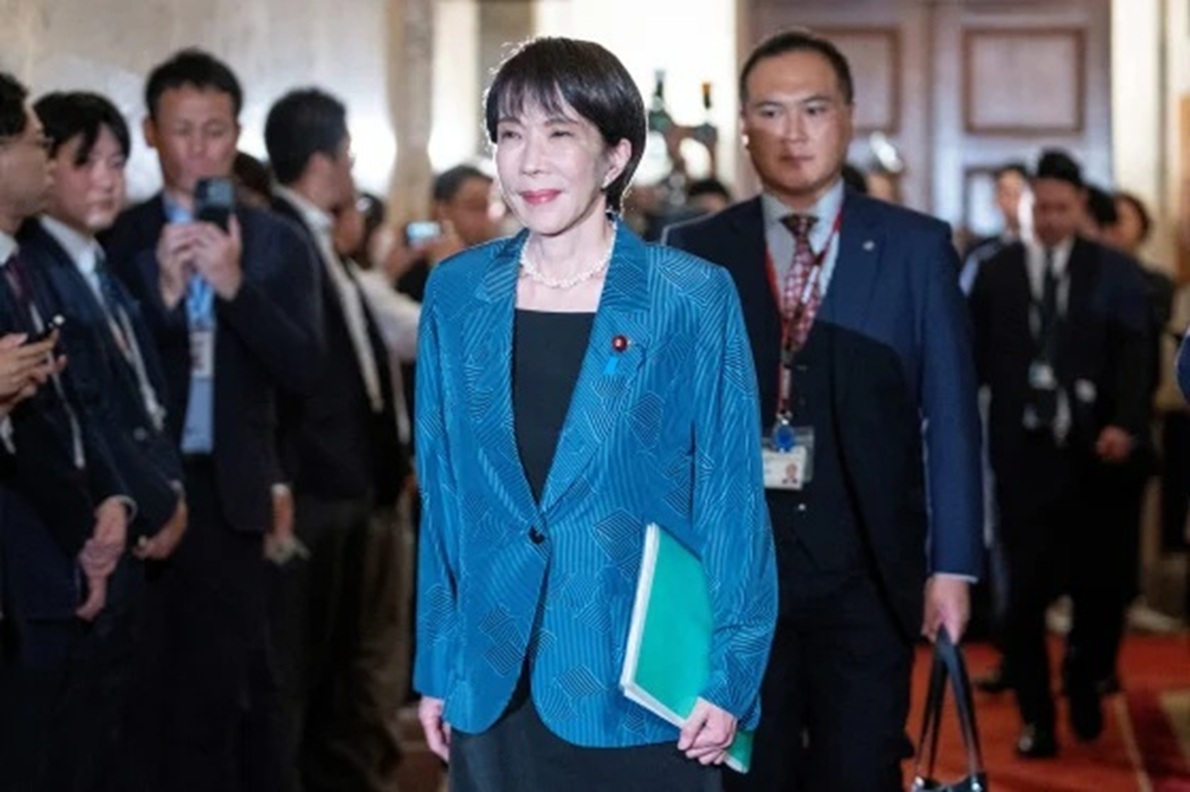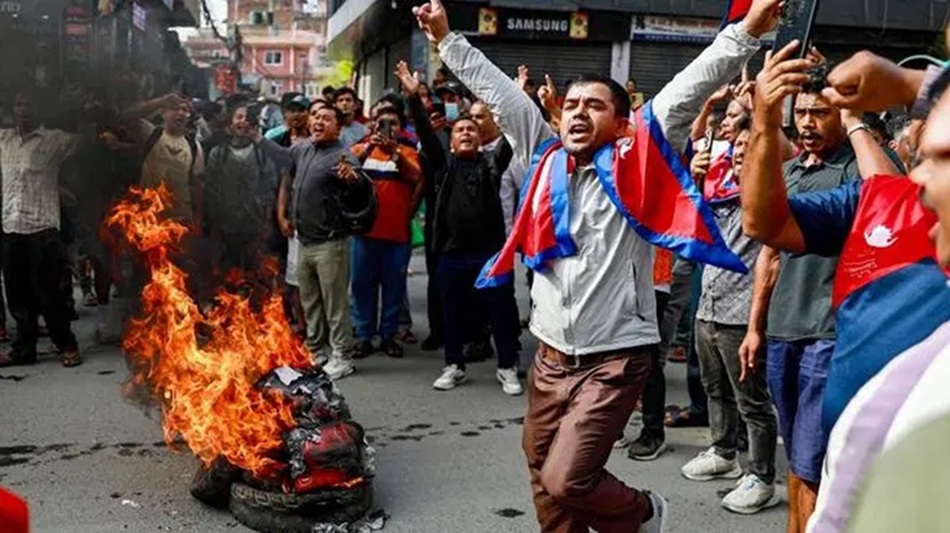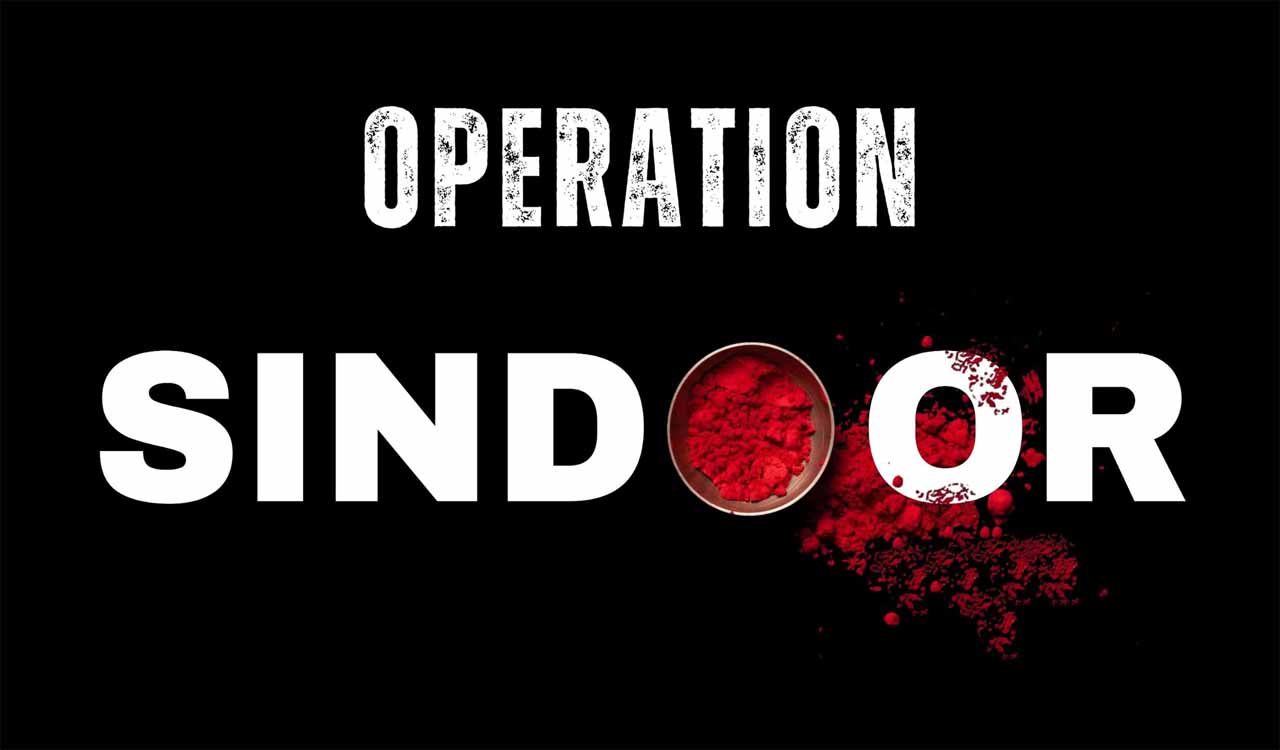India has made a formal communication to France about the decision taken on procurement of 26 Rafale M (Naval Variant) fighter aircraft for the Indian Navy under an intergovernmental agreement. The issue of procurement have figured during Defence Minister’s visit to Paris in October.
India is a leading nation-state in the Indian Ocean and Indo-Pacific regions at large. It is a vast peninsular country covering 3.28 million square kilometers of land area and oversees a vast maritime domain too. India remains committed to being a net security provider to maintain peace, security, safety, and stability in the regions in which it finds itself to be of geographical prominence. In the present geopolitical context, India is dealing with several state and non-state challenges and attempting to combat many traditional and non-traditional security threats in the maritime domain. Moreover, India remains a principled player in the region and is strongly committed to what it believes in.
To be a net security provider, India first needs quality hard assets at its disposal. The task isn’t easy and much work remains to be done. While India’s admirable ‘Make in India’ engine is currently running at full steam, acquiring foreign assets remains on the agenda due to superior quality, the importance of strategic partnerships, and immediate induction. Such acquisitions are expected to meet urgent requirements and thus give the ‘Make in India’ program the time it needs to become the country’s sole military supply factory. India first acquired 36 Dassault Rafale frontline fighters for its Air Force in September 2016, to meet shortages in its squadron strength. Today, the Rafale is an integral piece of the Indian air arm.
India remains a peace-inclined power. The Indian Navy has said that the maintenance of peace is an absolute priority as far as its actions are concerned. Moreover, India remains committed to safeguarding its national interests and pursuing them wherever feasible. Regional stability and strategic partnerships are also key in the context of the Indian Navy’s operational paradigms. With two aircraft carriers in its arsenal, India is also looking to acquire a third to ensure that there is a reserve aircraft carrier following the deployment of one carrier each on the western and eastern seaboard. The two countries Pakistan and China pose the greatest threat to India and are increasingly becoming more assertive as a duo. China, in particular, is encircling India with military-maritime bases across the Indian Ocean region. China aims to develop its People’s Liberation Army Navy (PLAN) into a world-class navy as soon as is realistically possible and has begun acquiring bases such as Djibouti in East Africa. Thus, in the current environment, it is a massive challenge for India to deal with increasing Chinese assertiveness.

Rafale M: A Potent Instrument for Maritime Dominance
India has been exploring a deal for a naval fighter aircraft for quite some time now. India needs strong squadrons of naval fighters with in-depth modern technological capabilities and special operational prowess. The need for maritime-naval combat aircraft has been identified lately. India currently possesses an arsenal of the Russian-made MiG-29K (naval variant) in its maritime naval inventory. Since the number of these jets that can be deployed has reduced to 40 (from 45), it is now necessary to acquire more aircraft to meet the operational requirements of the Indian Navy.
India has, thus, decided to upgrade its naval inventory by inducting advanced naval fighter jets. The two aircraft shortlisted for the multi-billion-dollar cause were: the Rafale-Marine (naval variant of the popular Rafale fighter jets of Dassault Rafale, France) and the F/A 18 Super Hornet (Boeing, USA). In end-October, India decided to go with the Rafale-Marines for a deal worth a princely sum of INR 50,000 crores. The deal will be a purely government-to-government contract. It is estimated that the first Rafales will arrive for the Indian Navy by 2026.
The Rafale-Marine (hereby referred to as Rafale-M) is a single-seater, twin-engine solely maritime fighter aircraft. It has been modified from the original Rafales to suit the maritime domain. It has similar mission capabilities as the frontline Rafale fighter jet. It has been specifically designed to operate from aircraft carriers. With India having commissioned its first-ever indigenous aircraft carrier, the Rafale-M is the perfect choice to debut from the deck of the INS Vikrant. The versatile Rafale Marine is presently deployed on France’s frontline aircraft carrier, the Charles de Gaulle.
There are several reasons why the Rafale-M can be expected to boost India’s military fortunes in the immediate future. Firstly, the Rafale-M is very clearly an instrument of power projection and sea control for India in the Indian Ocean. Further, since the Indo-Pacific matters to India, the carrier-borne aircraft will find itself at the helm of extra-regional considerations within naval strategy. Power is defined as the possession of ample material capabilities and there is no better way for India to do this than to purchase the Rafale-Ms and induct them as soon as possible.
Secondly, the Rafale-M’s deployment will equip India with a high-quality naval fighter that can spring to action when called upon in the high seas. The Rafale-M’s suitability in aircraft carriers need not be highlighted but this is a provision that supplements Indian strengths in oceanic spaces. Moreover, features such as Mach 1.8 speeds, high agility, superior and optimised airframe, smart sensors, radars, and advanced weapons, make the Rafale-M a deathly option as far as the naval air arm is concerned. Other important features include optimisation for storage aboard an aircraft carrier, anti-corrosion features, and payload capacity. While India waits to acquire the Rafale-Ms, it is deploying a few MiG-29Ks on the INS Vikrant aircraft carrier for the time being. The Rafales will be expected to take part in anti-ship operations off aircraft carriers as soon as they are inducted. The planes can also conduct reconnaissance missions since they are multi-role aircraft.
Thirdly, the Rafales will be deployed in aircraft carriers as part of the expanded carrier battle group (CBG). Rafales will be mission-oriented and will provide an excellent offensive element for battle on the high seas. India often deploys carrier battle groups on its seaboard. These are known to be a powerful, all-guns-blazing formation of ships such as aircraft carriers, destroyers, frigates, and other vessels for escort and the aircraft carrier itself features attack jets and multirole helicopters on its deck. Add submarines to the mix as another weapon of power projection and India is expected to command the sea like it never has done so previously.
Indian maritime-military strategy involves the deployment of a couple of carrier battle groups with the aircraft carrier as the frontline ship in geographical areas of its primary strategic interest. Primary Indian strategic interest stretches from West Asia to the periphery of Southeast Asia and covers the entirety of the Indian Ocean. Secondary strategic interest goes beyond these confines and extends to the entirety of the Indo-Pacific region. The utility of CBGs has been mentioned in the Ensuring Secure Seas document of 2015 of the Indian Navy. In June 2023, India tested two carrier battle groups in the Arabian Sea and the Rafales will be expected to strengthen the overall operational prowess of the CBG. This exercise has been undertaken with an eye on Pakistan and China.
As far as the future of the Indian Navy is concerned, the present doctrine continues to emphasise that India remains inclined toward peace and stability in the region but not at the cost of the nation’s maritime interests especially if they were to be threatened by external forces. The navy is evolving into a multidimensional force and will be aided by the advanced Rafale Marine jets serving aboard aircraft carriers. This deployment will be expected to strike fear in the heart of the adversary and deployments will even be undertaken for non-state threats should the need arise. While the focus remains on China, India will be hoping that once it is equipped with the Rafale-Ms, its navy will be seen in a different light altogether. This is because, alongside China, there are non-traditional threats such as piracy, maritime terrorism, and maritime crime that also need to be dealt with. India retains a forward-looking doctrine and also aims to work with like-minded countries to improve the region’s state of maritime security.
Conclusion
To position itself as a military power, a maritime power, and a nation committed to its principles of safety and security in the region, India certainly needs new aircraft to overhaul its defence posture. The Rafale Marine is befittingly one of them. With the plan to acquire 26 aircraft (inclusive of four twin-seater trainer aircraft) through the raised Letter of Request (initial stages of the deal), India is poised to strengthen its naval air arm considerably and concretely. India also expects to acquire equipment such as weapons systems and spares alongside the Rafale aircraft. The ready availability will immediately strengthen the naval air arm and interoperability will be boosted since India already possesses the Rafale jets in the Air Force.
The Rafale-Ms will complement the main Rafales and featuring such an advanced jet as the prime frontline striker aircraft is a positive development for India’s armed forces in general. Again, carrier-based operations need to be emphasised within the context of the acquisition of the Rafale-Ms. A key reason why India is pursuing deals from abroad is that the indigenous development of naval aircraft is slow (but steady) and will take some time to fructify. India cannot afford to ignore the twin threat being increasingly posed by Pakistan and China in the maritime domain. The maritime domain is advantageous for India since New Delhi governs a vast exclusive economic zone (EEZ) and can project power far away from its shores, thus fulfilling its eventual intention to become a global superpower.
Disclaimer: The views and opinions expressed by the author do not necessarily reflect the views of the Government of India and Defence Research and Studies
Title image courtesy: Eurasian Times





